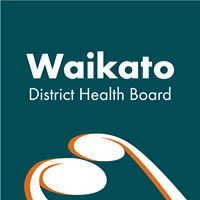Media Release
Date: 12 December 2014
New pathway to improve outcomes for stroke patients
Two services at Waikato District Health Board are collaborating to further improve the care of stroke patients at Waikato Hospital.
Patients with confirmed major acute strokes are now admitted directly to a new hyper acute stroke unit (HASU) in the Older Persons and Rehabilitation Building. Patients experiencing minor acute strokes (often known as TIAs) are admitted to the minor acute stroke unit in the Acute Medical Building.
Previously stroke patients were initially admitted to a medical ward and then transferred to a specialised stroke ward if required. However best-practice is for stroke patients to be treated in an environment where staff have acute stroke knowledge, and the new pathway does exactly that.
Julia Slark from the University of Auckland was commissioned to develop the new stroke pathway following her success in implementing a hyper acute stroke unit and changing stroke service provision across northwest London.
“This is a significant change as two services – Internal Medicine and Older Persons and Rehabilitation – need to work closely together to ensure all stroke and TIA patients receive consistent and equitable high standards of care,” she says.
Peter Wright, stroke specialist, is well-known for his passion when it comes to stroke patient care standards. He was instrumental in setting up the first stroke unit and in the continuing development of a comprehensive stroke service at Waikato DHB. “This collaborative model accommodates growing numbers of strokes and TIA patients but the aim remains the same – to provide a responsive, timely and high quality service for patients.
“We are aiming for the right care at the right time by the right people to improve outcomes for stroke patients.”
Although the two stroke units are in separate areas of the hospital campus, medical staff from internal medicine and neurology oversee both units.
Patients admitted to the hyper acute stroke unit are intensively monitored and will have a management plan spanning their first 72 hours in hospital. From there, the stroke team uses a “traffic light” system to make decisions about the best place for the patient to move to – this might be discharge home with START (Supported Transfer and Accelerated Rehabilitation Team), transfer to a stroke rehabilitation ward, or moving to a medical ward.
The clinical nurse specialist for the hospital’s stroke service, Pat Simpson, manages all patients who are admitted to either unit. One of her aims is more intensive follow up after a patient is discharged. “I am passionate about ensuring stroke patients are followed up throughout their journey and especially when they return home. Clinical nurse specialists are very privileged to be in a position to influence the best outcomes for patients.”
A joint stroke governance group, consisting of members from both services will meet monthly. Co-chaired by Doug Stephenson (clinical director, Internal Medicine) and Bel Macfie (nurse manager, Older Persons and Rehabilitation), the group’s function is to analyse data/patient outcomes, and review/improve operational processes associated with the new stroke pathway to maximise teamwork, collaboration and smooth patient flow.
“There is a huge amount of goodwill and commitment between the two services and we both want patients to receive the best possible care,” says Bel Macfie.
ENDS



 PHARMAC: Pharmac Consulting On Widening Access To Venetoclax, Azacitidine And Upadacitinib
PHARMAC: Pharmac Consulting On Widening Access To Venetoclax, Azacitidine And Upadacitinib Pharmaceutical Society of NZ: Launch Of PSNZ Position Statement And Priority Areas Of Focus
Pharmaceutical Society of NZ: Launch Of PSNZ Position Statement And Priority Areas Of Focus Jack Yan: A Farewell To Arms Re-released, In The Form Ernest Hemingway Intended
Jack Yan: A Farewell To Arms Re-released, In The Form Ernest Hemingway Intended Baycourt Community and Arts Centre: Talofa Papa - A Celebration Of Laughter, Love And Family
Baycourt Community and Arts Centre: Talofa Papa - A Celebration Of Laughter, Love And Family Bikesport NZ: 2025 Honda New Zealand Motocross Grand Prix At Woodville - Greatest Show On Turf A Memorial Event
Bikesport NZ: 2025 Honda New Zealand Motocross Grand Prix At Woodville - Greatest Show On Turf A Memorial Event Crohn's and Colitis NZ: Camp Purple Live 2025 - Celebrating A Decade Of Fun And Friendship For Kids And Teens With Inflammatory Bowel Disease
Crohn's and Colitis NZ: Camp Purple Live 2025 - Celebrating A Decade Of Fun And Friendship For Kids And Teens With Inflammatory Bowel Disease